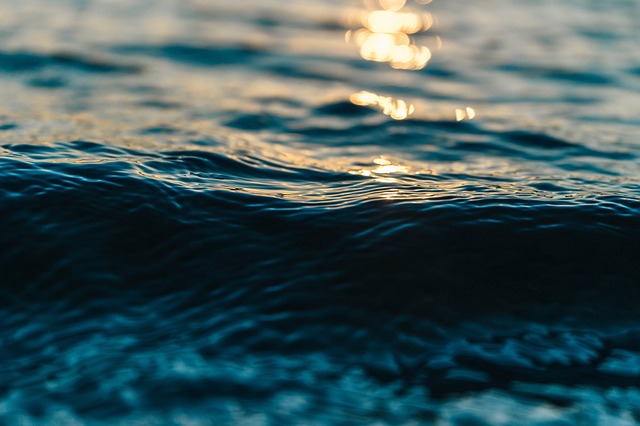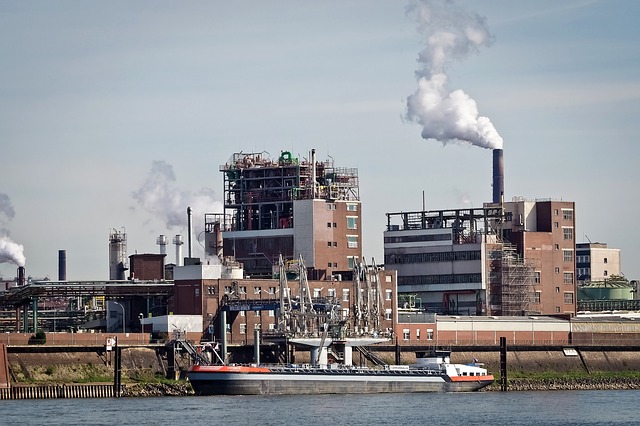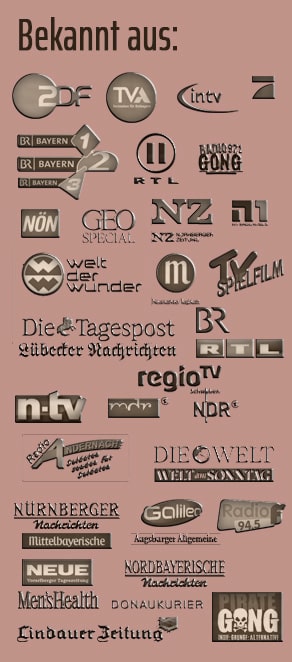Comparison of methods for outdoor water treatment and disinfection
Whether you are planning a world tour, a climbing trip, an outdoor weekend or a survival tour, you should always know how to get good, drinkable water. As long as we are travelling within our civilisation, this is usually not a problem, as there are water taps and water bottles everywhere. But already in some southern or exotic countries even the tap water can be so contaminated that you get sick from it. Therefore it is important to know exactly how you can make your water drinkable. There are different methods for water disinfection and water treatment, some of which are especially suitable for outdoor conditions. Depending on how it is contaminated, it is sometimes sufficient to disinfect the water. But sometimes it has to be filtered or even distilled. And sometimes you should just leave it alone.
Why is water treatment so important in the outdoor sector?
Hardly anything can spoil an outdoor adventure in the wilderness as much as bad water! Even a small amount of it is enough to get diarrhoea and vomit. Within a few minutes you feel weak and ill, because your body loses a lot of water through diarrhoea.
If there is no clean, compatible drinking water and no other help is to be expected, the situation can even become really dangerous. (You can read more about how to deal with symptoms of poisoning caused by bad water and about the best immediate measures to take in our article about Outdoor-1-Help). To make sure it doesn't happen, you should have at least one method of sterilizing water with you on a wilderness tour.
Beware of chemically contaminated water!
However, before we come to the actual methods of water disinfection, we first have a warning. There is one important thing you need to know in order not to get diarrhoea in spite of water purification. Depending on where the water comes from, it can be poisonous or unhealthy for us for many different reasons. First of all, you have to distinguish between two main sources of water pollution. This is the only way to find out whether the water can be made drinkable again or not.
Contamination through germination
Water that is found outside in nature - i.e. outdoors - can be contaminated in two completely different ways and thus be unusable for consumption. The first form is a contamination of the water, which means nothing else than that microorganisms such as bacteria, parasites, salmonella and other unicellular organisms live in it.
Although we have developed a general panic in our culture towards these tiny creatures, very few of them are inherently harmful. Most of the bacteria found in wild water would even be important and beneficial for our body and especially for our digestion.
The reason why they can still lead to severe digestive problems, diarrhoea and vomiting is the following. We have become so accustomed to living so sterile today that our gastrointestinal tract is no longer accustomed to its natural bacterial flora. So one would have to get used to the pleasure of wild water again very slowly. This is because it gives the digestive system the opportunity to adjust to the diversity of microbes in its inner organs. It is a bit like a habitat that has been kept free of animals and plants for a long time. If you lift the barrier and let all beings flow into it at the same time, there is chaos at first. Only with time can the natural order be restored. However, this usually takes much longer than most people are on the road at all. Moreover, it only works if you can drink enough other water without bacteria at the same time. Water treatment therefore remains a problem.
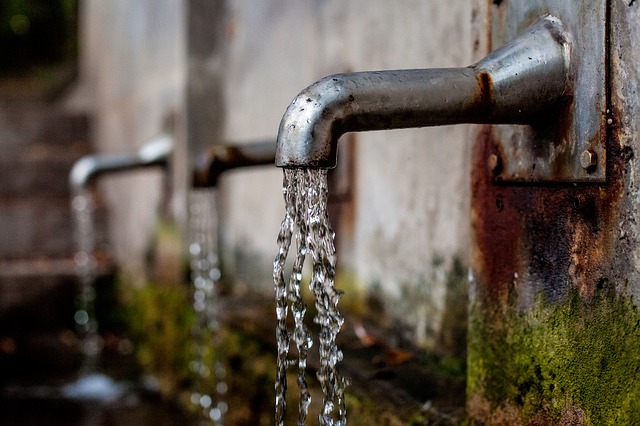
Water treatment unnecessary: Tap with fresh drinking water
Contamination by chemicals
The second form of water pollution is contamination with toxic chemicals, such as fertilizers or agricultural pesticides. But cleaning agents, waste medication and household poisons that leak from rubbish dumps and seep into the water are also a problem. Worst of all, however, are toxic industrial wastes that are discharged into the water from factories, power stations or workshops. These toxins cannot be killed off and they are usually so small that they cannot be filtered out, or only with difficulty.
ATTENTION: With the exception of distillation, all water treatment methods which we present here therefore only work with contaminated water, but not with poisoned water!
In order to be able to drink water in nature without danger, you have to make sure that there are no poisonous sources nearby. This means: Watch out for agricultural fields, garbage dumps, cities, industrial areas and the like. If there is anything near or above your water tank, don't touch it. You cannot be sure that you can make your water drinkable here.
Using water from rivers for water treatment is also risky. It is basically only suitable in areas where you can say with certainty that it has not previously flowed through civilized, agricultural or industrial areas.
Different ways to treat water
But now we come back to the question of how you can sterilize your water and make it drinkable. Today, there are many different ways to treat water (outdoors), most of which have their advantages and disadvantages. After now about 35.000km of continuous hiking through the most different areas of Europe from the desert-like Extremadura in Spain to the lonely forests of Bosnia and the rain-soaked Highlands in Scotland, we have been able to gain some experience with water and its disinfection. Here we would like to introduce you to the most common methods of water treatment and give you a feeling for which one is best suited and when.
Water disinfection by boiling
The probably simplest and oldest method of water treatment and disinfection is boiling. Most microorganisms cannot survive in boiling water and therefore die, so that you can drink the boiled water safely. Only a few parasite species survive temperatures of up to 120°C, which means they will survive boiling. However, these are rare and only occur in a few areas in the world. Within Europe they do not exist and if you inform yourself about your destination area before your journey, you can easily exclude whether they are a danger for you or not.
The advantages and disadvantages of this method are very close together. If you have a cooker equipment with you anyway, you don't need anything else, which can save a lot of space and weight. On the other hand, if you are travelling without cooking equipment, it will be more difficult, as you will have to make a fire and need a fireproof container for the water.
Another drawback is that the method requires a relatively large amount of energy if you are cooking with gas or petrol. Also, it is often a bit cumbersome during a hike to have to set up a cooking station or make a campfire when the water starts to rise.
The method is therefore more suitable in the evening for the time you have set up camp or for trips where you set up a base camp from which you do stabbing tours.
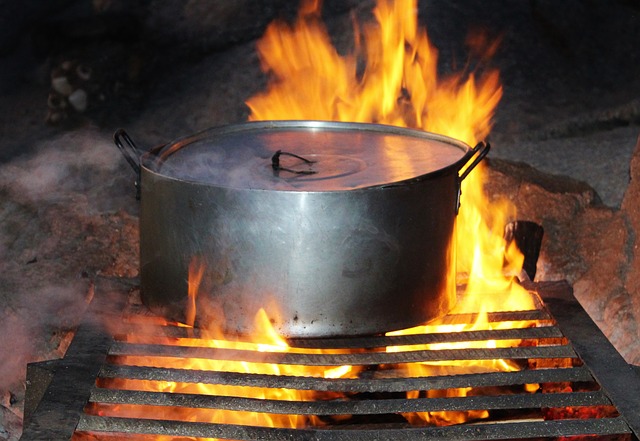
Boiling off is one of the easiest and safest methods of water treatment.
Water disinfection with chlorine tablets
Chlorine tablets work very reliably but usually need at least two hours of exposure before you can drink the water safely. The big advantage is that they are small and space-saving and require no additional equipment. You simply throw them into your water container, wait for them to take effect and you can drink.
[amazon box="B006QJN2OA" title="Micropur Tabletten zur Wasseraufbereitung" description=" Micropur Forte MF 1T - Wasserdesinfektion für klares Wasser. Technologie: Silberionen kombiniert mit Chlor - entkeimt und desinfiziert. Kontaktzeit: 30 min für Bakterien und Viren, 2 h für Giardia in klarem Wasser. Inhaltsmenge: 100 Tabletten (1 Tablette für 1 Liter Wasser) " ]The big disadvantage, however, is that you now have germ-free water, but water with chlorine in it. Apart from the fact that this unfortunately does not taste very good, it is also anything but healthy in the long run. By nature, our body cells are only slightly different from bacteria and this usually means that they too suffer from chlorine water in the long term. Therefore the tablets are only suitable for short trips and everything when you want to travel with little luggage.

Water disinfection with chlorine tablets: effective but not too healthy.
Water disinfection with MMS
MMS is a chlorine compound that has been used for many decades to disinfect water and was even used by some of the first expeditionists in Africa. It consists of two liquids which are mixed shortly before use and then added to the water.
Unlike the chlorine tablets, the MMS is better tolerated by the body and even has some very amazing healing abilities. For example, expeditionist Jim Humble discovered by chance during a trip to Africa that malaria can be cured much better and more effectively with this compound than with any other methods known to date. This was also the reason why he gave the drug the name MMS (Miracle Mineral Supplement), under which it is still known today.

MMS (sodium chlorite 25% + citric acid 50%) for water disinfection and water treatment
100 ml sodium chlorite solution (25%) 100 ml citric acid solution (50%) In robust amber glass bottles Screw cap (incl. dropper) with child safety lock according to ISO standard 8317 Safety data sheet and product information enclosed19.90€
MMS itself consists of two components that are mixed together directly before use. One is chlorine dioxide (ClO2) and the second is an acid (hydrochloric acid or citric acid) as activator. If both are mixed, a yellowish liquid is formed which has a very strong cleaning and antiseptic effect. One drop of each component is enough to sterilize one liter of water. As a medicine MMS is taken directly in different concentrations.
The disadvantage of this method consists above all in the fact that also the MMS gives the water an unpleasant taste. The advantage, however, is that with the two liquids you now already carry a small travel pharmacy with you, with which you can treat different illnesses and infections. A more exact description, what MMS is, how it works and what you can do with it besides the water treatment, you can find in the article "MMS".
Water treatment with the water filter
One of the most popular and widespread methods of making water drinkable is to filter it. There are different techniques and filter systems for this purpose, some of which work very differently. In the survival sector, with the right material and some practice, such filters can be made from natural materials.
Possibilities and limits of self-built water filters
However, self-built water filters work mainly to free the water from suspended particles and coarse impurities. Microbes and micro-organisms that can cause digestive problems, on the other hand, are difficult to eliminate in this way, as they are usually so small that they simply pass through the filter. Some toxins and microorganisms can be removed from the water with the help of activated carbon filters. In the case of a homemade filter, this can be achieved by using crushed charcoal from a campfire. However, it is not a 100% safe method and should only be used if you either have no other choice or are very sure that the water is largely uncontaminated.

The activated carbon filter from Katadyn is also suitable for water treatment in dirty water
Professional water filters
The situation is different with professional water filter systems such as the filters from Katadyn. They have a ceramic filter that is capable of filtering even microscopically small solids from the water. They also have an activated carbon filter that binds toxins and removes microorganisms from the water. This makes these water filters one of the safest and most reliable methods of water treatment. However, it is important to clean and dry the filter well after each use, otherwise you run the risk of making the filter itself a breeding ground for bacteria and end up enriching your water with microorganisms instead of cleaning it from them.
[amazon box="B000RZEJPU" title="Katadyn Wasserfilter Pocket" description=" Mit seinem Filterelement aus Mikroporenkeramik (0, 2 Mikron, silberimprägniert) wirkt er zuverlässig gegen Bakterien und Protozoen. Zudem ist er stabil und leistungsfähig und damit ein guter Begleiter auf unzähligen Safaris, Expeditionen und Reisen. Gefertigt aus Aluminium und rostfreiem Stahl." ]The only noteworthy disadvantage of a high-quality filter system is that it is relatively large and heavy compared to other methods, which makes it somewhat impractical for backpacking and expeditions without an escort vehicle. For more details on water treatment with the water filter and the test report on the Katadyn filter system, please refer to the article "Water filter in test".
Water disinfection with the Steripen
Concentrated UV radiation kills all kinds of microorganisms, germs, bacteria, protozoa and the like without affecting the water itself. The Steripen takes advantage of this fact. In principle, it is nothing more than a small, handy stick with a UV lamp at the end, which is immersed in the water to be sterilized. If the water is stirred evenly with the lamp so that the UV rays can reach everything, the water is drinkable after only 90 seconds.
In addition to the high speed with which you can treat your water, this technology has the advantage that it does not require any chemicals whatsoever, is space-saving and easy to transport, and requires almost no maintenance. The only disadvantage is that the Steripen is an electronic device and therefore only works when it is powered. So you need sufficient batteries or the possibility to recharge it again and again.
[amazon box="B006PACZH0" title="SteriPEN UV Wasserentkeimer" description=" Praktisches UV Wasseraufbereitungssystem im Taschenformat (19,3cm x 3,8cm x 3,8cm), Gewicht nur 162g inkl. Batterien . Desinfiziert 1 Liter Wasser in ca. 90 Sekunden, UV-Licht-Lampe ergibt ca. 8.000 Anwendungen." ]Further details on water treatment with the Steripen, as well as our experience and test reports on various Steripen models can be found in the article "Steripen im Test".
Water treatment by distillation
The distillation of water is both the most complex and the most reliable method of obtaining drinking water. If the water is brought to evaporation, all the substances that were dissolved in it or contained as suspended matter remain on the ground, while the water vapour can be collected and used largely without danger. In this way it is even possible to make salt water, water from extremely questionable sources and one's own urine drinkable.
The only substances that cannot be removed from water by distillation are other liquids that are similarly volatile to water itself. This means: If there is a poison in the water that also evaporates at a temperature of 100°C or less, you will of course not get rid of it by distillation. This danger does not normally exist, unless you use water that flows directly from an industrial plant, where you do not know which poisons are used.
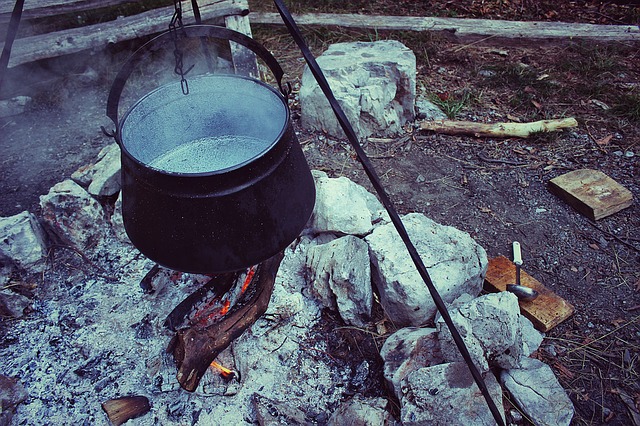
Distillation is one of the most effective but also most elaborate methods to sterilize water.
The big disadvantage of distilling is that it is a very complex procedure. You have to make your water evaporate and then collect the water vapour again. This allows it to condense and come together in one place. There you can collect the water again and use it as drinking water.
If you really have nothing but salt water, urine or chemically contaminated water, then distillation is the method of choice. In all other cases you will be much better off with one of the above techniques. For more information on water purification using distillation, please see the relevant article.
Conclusion
Anyone who spends long periods of time in nature or in demanding areas should definitely familiarize themselves with various techniques for outdoor water treatment. This is the only way to adapt to the different conditions.
Water is one of the most important foundations of life. If we do not have it available in sufficient quantity and quality, it can be not only unpleasant but also quickly deadly. Each method has its own advantages and weaknesses.
For us personally, SteriPens and water filters (for example from Katadyn) have emerged as favourites in the course of our travels and expeditions. In our experience, these are simply the most reliable and at the same time most practical methods for water treatment.

